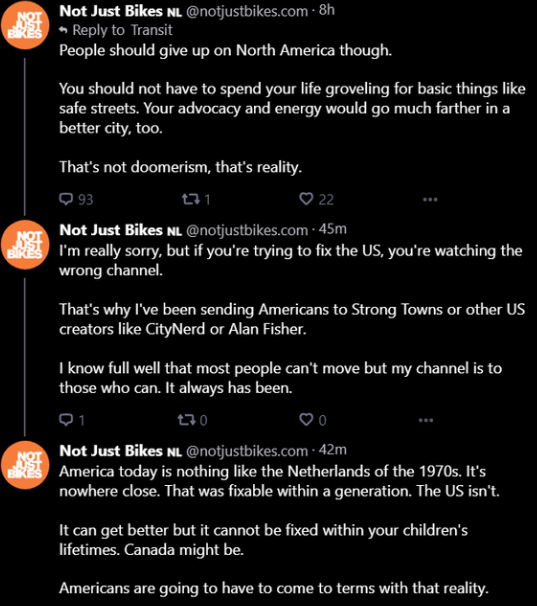Fuck Cars
A place to discuss problems of car centric infrastructure or how it hurts us all. Let's explore the bad world of Cars!
Rules
1. Be Civil
You may not agree on ideas, but please do not be needlessly rude or insulting to other people in this community.
2. No hate speech
Don't discriminate or disparage people on the basis of sex, gender, race, ethnicity, nationality, religion, or sexuality.
3. Don't harass people
Don't follow people you disagree with into multiple threads or into PMs to insult, disparage, or otherwise attack them. And certainly don't doxx any non-public figures.
4. Stay on topic
This community is about cars, their externalities in society, car-dependency, and solutions to these.
5. No reposts
Do not repost content that has already been posted in this community.
Moderator discretion will be used to judge reports with regard to the above rules.
Posting Guidelines
In the absence of a flair system on lemmy yet, let’s try to make it easier to scan through posts by type in here by using tags:
- [meta] for discussions/suggestions about this community itself
- [article] for news articles
- [blog] for any blog-style content
- [video] for video resources
- [academic] for academic studies and sources
- [discussion] for text post questions, rants, and/or discussions
- [meme] for memes
- [image] for any non-meme images
- [misc] for anything that doesn’t fall cleanly into any of the other categories
Recommended communities:
view the rest of the comments

I don't think the US is a lost cause. I think about 80-90% of the US shouldn't be the focus of smarter urbanization efforts, but that's because 80-90% of the US is sprawling farm land.
I'm seeing sentiment shift around cars, bikes, and public transit. I had a discussion at work the other day and three of five people said they would much prefer public transit or biking to work, it's just not viable with today's options. I think local effort can and will spread the message. "If Springfield can do it, Shelbyville can do it better" needs to be our aim. Things like national high speed rail networks are just too big to start until the ball is already rolling.
It's even more than 90% of the land: 80% of people in the US live in just 3% of the land area. The only infrastructure needed in 97% of America is just train lines stringing small towns to the nearest big cities. We used to have this. The train tracks are mostly still there. We just need to make a deal with railroad companies that we'll invest in the tracks in return for national passenger trains having total priority on them. Or just eminent domain them, that would work too.
As a train nerd, I'm 100% on board with "nationalize the rails" and use a similar licensing system as we presently use with trucking and open up the rails to private companies whose equipment meets FRA + Amtrak standards.
With the rails being publicly owned railroads only have to foot the bill for vehicle maintenance much like truck companies do, and it puts railroads on an even footing with truck companies for price competition. There's always the challenge of investment in new lines, but that can easily be managed with a set exclusivity period, say "10 years exclusive rights for tracks you construct yourself" with requirements for maintenance, require FRA approval to remove the tracks within that exclusivity period, and require allowing non-competing passenger services and through trains (with of course very explicit language for what counts as "competing passenger services" since a once a week passenger car shoved on the end of a local freight train that goes from nowhere to nowhere shouldn't count as competing with hourly intercity passenger services)
With publicly owned rails, signalling and dispatching the FRA could also greatly improve throughput by eliminating a lot of the obsurdity that Precision Scheduled Railroading introduced (which is not precision, nor scheduled and its barely railroading)
Biggest for me is that publicly owned rails would allow for much more impressive excursion trains and more extensive routes that come much closer to home